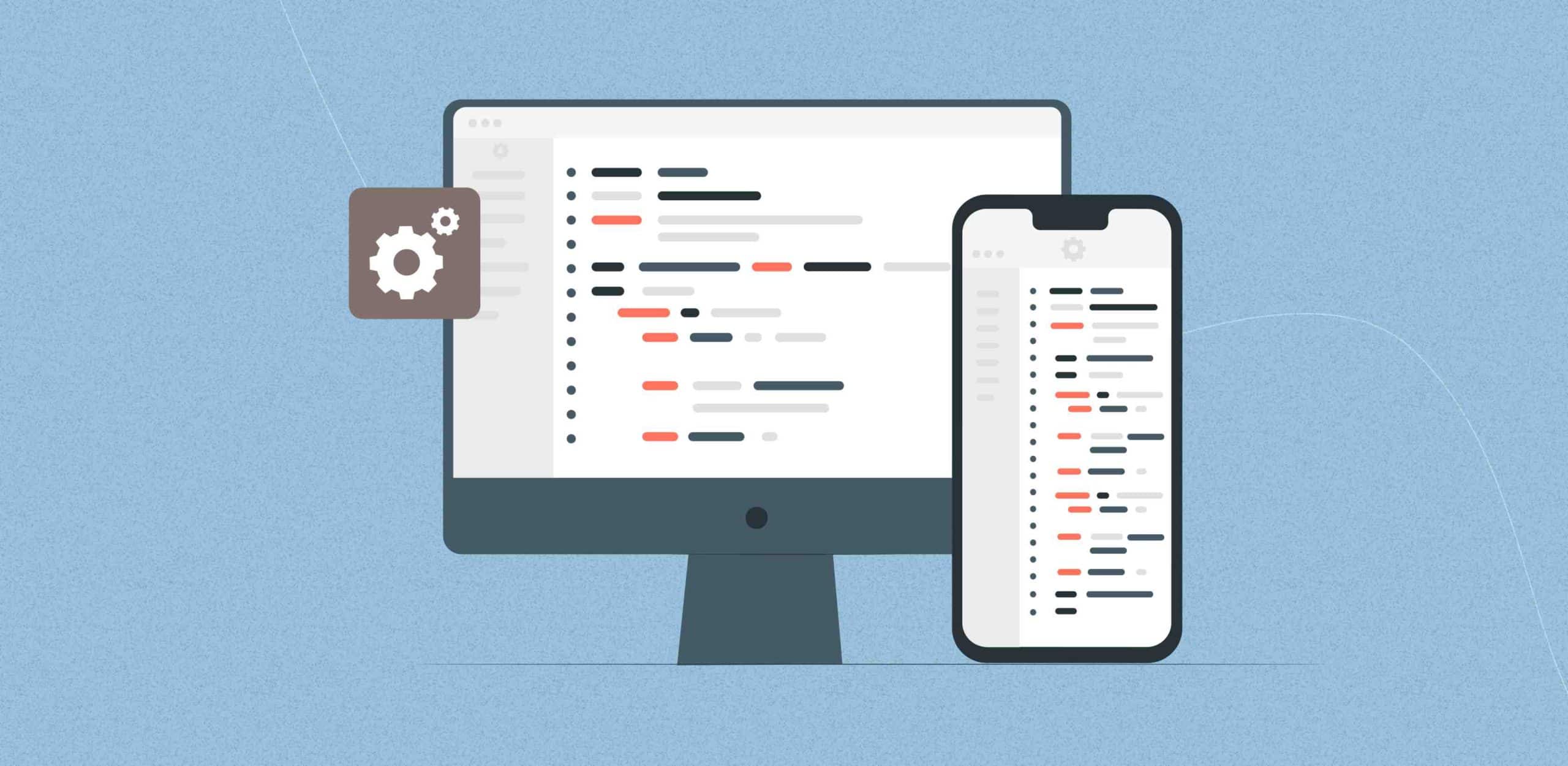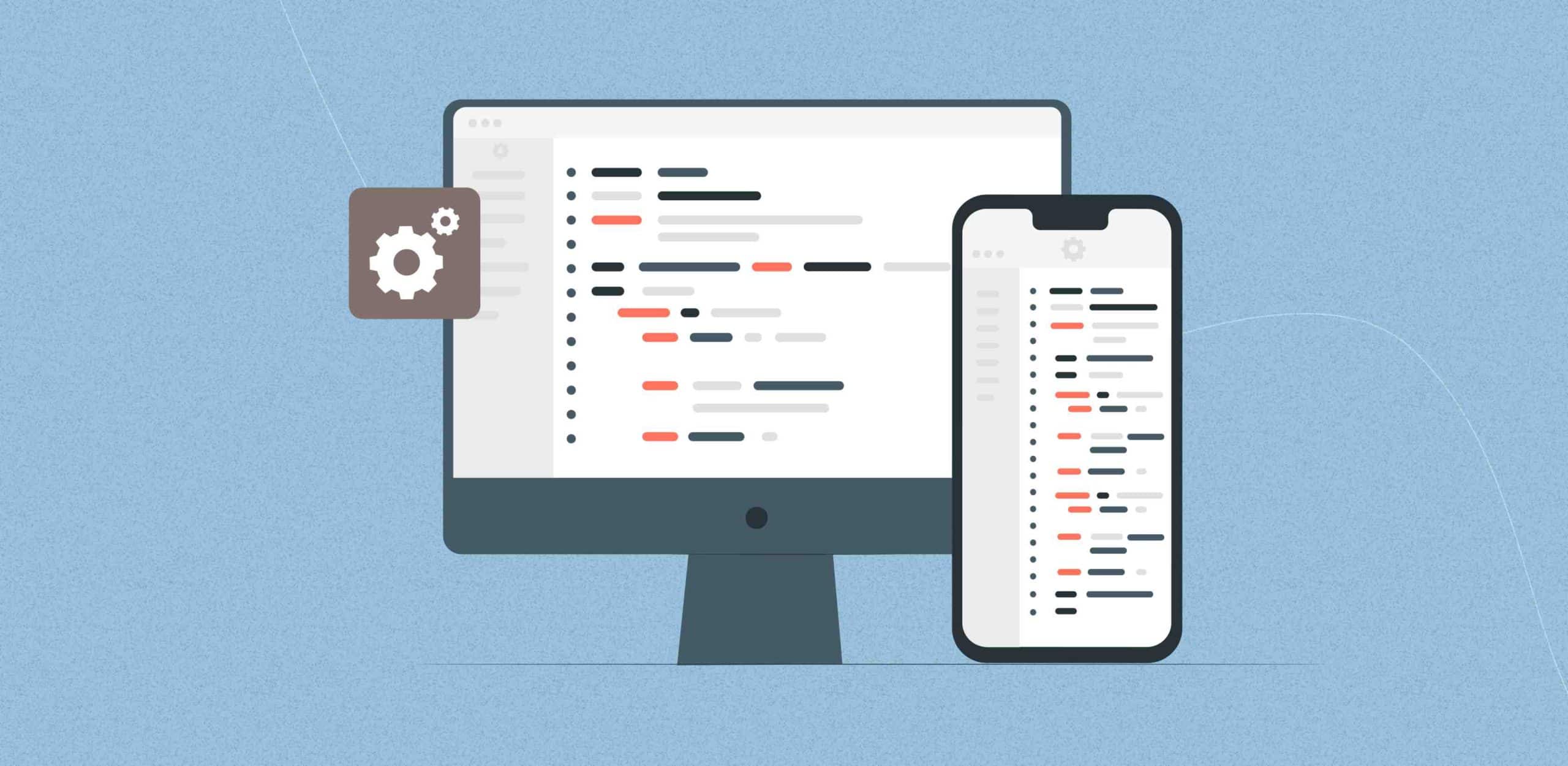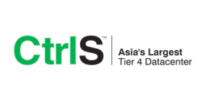Telemedicine solutions are rapidly transforming the healthcare landscape, offering innovative ways to deliver medical care remotely. As the demand for accessible, cost-effective, and efficient healthcare services grows, integrating telemedicine solutions into existing healthcare systems has become a priority for many providers.
This blog explores the concept of telemedicine, its benefits, challenges, and the steps required for successful integration. By understanding and implementing these solutions, healthcare providers can enhance patient care and operational efficiency.
Understanding Telemedicine Solutions
Telemedicine solutions encompass a range of technologies that enable remote medical consultations and care, transforming how healthcare services are delivered. These solutions leverage both software and hardware to facilitate healthcare interactions over a distance, making it easier for patients to receive medical care without the need to travel. Here, we delve into the primary components of telemedicine solutions that make this possible:
Secure Video Conferencing and Messaging Tools
Communication platforms are the backbone of telemedicine solutions, enabling real-time interactions between healthcare providers and patients. These platforms must be secure to protect patient privacy and comply with regulatory standards such as HIPAA (Health Insurance Portability and Accountability Act) in the United States. Key features of communication platforms include:
- Video Conferencing: High-quality video conferencing tools allow for face-to-face consultations, ensuring that doctors can observe patients’ physical symptoms and expressions. Platforms like Zoom for Healthcare, Doxy.me, and VSee offer secure, HIPAA-compliant video conferencing services tailored for telehealth. Enfin’s customizable WebRTC-based video conferencing platform, Twyng offers a comprehensive and flexible solution that caters to a wide range of needs.
- Instant Messaging: Secure messaging tools enable quick text-based communication between patients and healthcare providers. These tools are useful for follow-up questions, prescription refills, and minor consultations. They often include features like encrypted messaging, file sharing, and integration with Electronic Health Records (EHR).
- Telephonic Communication: For patients without internet access, telephonic consultations offer an alternative means of remote communication. These services must also ensure privacy and security.
Remote Monitoring Devices
Diagnostic devices play a crucial role in telemedicine by allowing continuous monitoring of patients’ health metrics. These devices collect and transmit data to healthcare providers, enabling them to monitor patients’ conditions remotely and intervene when necessary. Common remote monitoring devices include:
- Blood Pressure Monitors: Wireless blood pressure monitors can send real-time data to healthcare providers, helping them track hypertension and adjust treatment plans accordingly.
- Glucose Meters: Continuous glucose monitors (CGMs) provide real-time blood sugar readings, crucial for managing diabetes. These devices can alert both patients and healthcare providers to potential issues before they become critical.
- Wearable Sensors: Wearable devices such as smartwatches and fitness trackers can monitor a range of health metrics, including heart rate, activity levels, sleep patterns, and oxygen saturation. Advanced wearables can even detect arrhythmias and other cardiac events, providing early warning signs of serious conditions.
- Telehealth Kits: These kits often include a combination of diagnostic tools like digital stethoscopes, otoscopes, and dermatoscopes, allowing healthcare providers to conduct thorough examinations remotely.
Get to know more about the best Telemedicine App Development Company in India – Enfin Technologies.
Electronic Health Records (EHR) and Data Integration Tools
Effective telemedicine solutions require robust data management systems to store, manage, and analyze patient information securely. These systems ensure that healthcare providers have access to comprehensive and up-to-date patient records, facilitating better decision-making and continuity of care. Key components of data management systems include:
- Electronic Health Records (EHR): EHR systems store detailed patient information, including medical history, treatment plans, lab results, and imaging studies. Integrating telemedicine platforms with EHR systems ensures that all patient interactions, whether in-person or remote, are documented in a single, unified record.
- Data Integration Tools: These tools facilitate the seamless exchange of data between different systems and devices. For example, integrating data from remote monitoring devices with EHR systems allows healthcare providers to view all relevant patient data in one place. Interoperability is crucial for ensuring that data from various sources can be combined and analyzed effectively.
- Secure Cloud Storage: Many telemedicine solutions utilize cloud-based storage to manage large volumes of patient data securely. Cloud storage solutions offer scalability, ensuring that healthcare providers can easily expand their storage capacity as needed. They also provide robust security features, including encryption and access controls, to protect sensitive patient information.
Benefits of Integrating Telemedicine Solutions into Healthcare Systems
Integrating telemedicine solutions into healthcare systems offers a myriad of benefits, revolutionizing how medical services are delivered and received. By leveraging advanced telehealth technologies, healthcare providers can enhance patient care, streamline operations, and ultimately achieve better health outcomes. Below, we explore the key benefits of integrating telemedicine into healthcare systems.
- Improved Access to Care
Telemedicine significantly increases access to healthcare services, especially for patients in remote or underserved areas. By eliminating the need for physical travel, telemedicine allows patients to receive medical consultations and follow-ups from the comfort of their homes. This is particularly beneficial for elderly patients, individuals with mobility issues, and those living in rural regions with limited healthcare facilities.
For instance, a patient living in a rural area may have to travel long distances to see a specialist. With telemedicine, this patient can have a virtual consultation with a specialist from a major city without leaving their home. This not only saves time and travel costs but also ensures that the patient receives timely medical attention, which can be crucial in managing chronic diseases or addressing acute health issues.
Moreover, telemedicine can bridge the gap in healthcare accessibility by providing services in regions where there are shortages of healthcare professionals. For example, telemedicine can connect patients in remote areas with doctors, nurses, and other healthcare providers who are not physically present in their locality. This expands the reach of healthcare services and ensures that more people have access to quality care. - Cost Efficiency
Integrating telemedicine can reduce healthcare costs for both providers and patients. For providers, telemedicine can lower overhead costs associated with running physical clinics and hospitals. For example, telemedicine reduces the need for large waiting areas, extensive physical infrastructure, and on-site staff, leading to significant cost savings.
For patients, telemedicine reduces travel expenses and time off work. Patients no longer need to take a day off to travel to a healthcare facility, wait for their appointment, and then travel back home. Instead, they can schedule a virtual consultation at a convenient time, minimizing disruption to their daily lives.
Additionally, early intervention and continuous monitoring through telemedicine can prevent costly emergency room visits and hospitalizations. For example, remote monitoring of chronic conditions such as diabetes or hypertension allows healthcare providers to detect potential issues early and intervene before they escalate into emergencies. This proactive approach not only improves patient outcomes but also reduces the overall cost of healthcare by avoiding expensive emergency care.
- Enhanced Patient Engagement
Telemedicine tools can improve patient engagement by making healthcare more accessible and convenient. Patients are more likely to attend appointments and adhere to treatment plans when they can easily connect with their healthcare providers. The convenience of telemedicine reduces the barriers to accessing care, leading to higher patient engagement and satisfaction.
For example, patients with busy schedules or those with childcare responsibilities may find it difficult to attend in-person appointments. Telemedicine allows them to schedule appointments during their lunch break or after work, ensuring they receive the care they need without disrupting their routine.
Telemedicine also facilitates better communication and education, empowering patients to take an active role in managing their health. During virtual consultations, healthcare providers can use digital tools to explain medical conditions, treatment options, and self-care strategies more effectively. For instance, a doctor can share their screen to show a patient how to use a glucose monitor or demonstrate physical therapy exercises.
By improving communication and providing personalized education, telemedicine helps patients understand their health conditions better and take proactive steps in their care. This leads to better adherence to treatment plans, improved self-management of chronic conditions, and overall better health outcomes.
- Better Health Outcomes
Studies have shown that telemedicine can lead to improved health outcomes. For example, remote monitoring can help manage chronic conditions more effectively by providing continuous oversight and timely interventions. Patients with conditions such as heart disease, diabetes, or chronic obstructive pulmonary disease (COPD) can benefit from regular monitoring and prompt adjustments to their treatment plans based on real-time data.
Remote monitoring devices can track vital signs, blood glucose levels, heart rate, and other health metrics, transmitting this data to healthcare providers for analysis. If any abnormal readings are detected, healthcare providers can quickly contact the patient and provide guidance on necessary actions. This continuous monitoring and immediate response can prevent complications, hospitalizations, and emergency room visits.
Real-time consultations ensure that patients receive prompt care, reducing the risk of complications and hospital readmissions. For instance, a patient experiencing symptoms of a urinary tract infection can have a virtual consultation with a healthcare provider, receive a diagnosis, and start treatment immediately. This timely intervention can prevent the infection from worsening and requiring more intensive treatment or hospitalization.
Challenges in Integrating Telemedicine Solutions
Integrating telemedicine solutions into existing healthcare systems is a complex process that involves overcoming several significant challenges. These challenges include technological barriers, regulatory and compliance issues, healthcare professional training, and patient adoption. Addressing these challenges effectively is crucial for the successful implementation and utilization of telemedicine.
Technological Barriers
One of the main challenges in integrating telemedicine is the technological infrastructure required. This includes reliable internet connectivity, secure communication platforms, and interoperable systems that can seamlessly share data. Healthcare providers must invest in the right technology and ensure that it integrates smoothly with existing systems.
- Reliable Internet Connectivity
For telemedicine to function effectively, reliable internet connectivity is essential. Patients and healthcare providers need stable and high-speed internet connections to facilitate smooth video consultations and real-time data sharing. In many rural or underserved areas, internet access can be a significant barrier, limiting the reach and effectiveness of telemedicine services.
- Secure Communication Platforms
Security is paramount in telemedicine, where sensitive patient information is exchanged. Healthcare providers must use secure communication platforms that comply with data protection regulations. These platforms should offer end-to-end encryption to protect data from unauthorized access and ensure patient confidentiality.
- Interoperable Systems
To provide seamless care, telemedicine systems must be interoperable with existing healthcare IT infrastructure, including Electronic Health Records (EHR). Interoperability allows for the smooth exchange of patient data, ensuring that healthcare providers have access to comprehensive patient information, which is crucial for accurate diagnosis and treatment.
Regulatory and Compliance Issues
Telemedicine must comply with various regulatory and legal requirements, including patient privacy laws like HIPAA in the United States. Ensuring compliance can be complex and time-consuming, requiring a thorough understanding and implementation of necessary safeguards to protect patient data.
- HIPAA Compliance
In the United States, the Health Insurance Portability and Accountability Act (HIPAA) sets the standard for protecting sensitive patient data. Telemedicine providers must ensure that their platforms and practices comply with HIPAA regulations, which include secure data storage, transmission, and access controls.
- State and Federal Regulations
In addition to HIPAA, telemedicine providers must navigate various state and federal regulations that govern the provision of telehealth services. These regulations can vary significantly between states, covering aspects such as licensing, reimbursement, and scope of practice. Staying informed about these regulations and ensuring compliance is crucial to avoid legal issues and penalties.
Healthcare Professional Training
Effective use of telemedicine solutions requires proper training for healthcare professionals. Providers must be comfortable using telemedicine tools and understanding their functionalities. Continuous education and support are essential to maximize the benefits of telemedicine and ensure high-quality patient care.
- Technical Training
Healthcare professionals need to be trained on the technical aspects of telemedicine platforms, including how to set up and conduct video consultations, use remote monitoring devices, and manage digital patient records. Providing comprehensive technical training helps ensure that providers can use these tools effectively and confidently. - Best Practices and Protocols
In addition to technical training, healthcare professionals should be educated on best practices and protocols for delivering telehealth services. This includes understanding how to conduct virtual consultations, maintain patient engagement, and ensure patient privacy and confidentiality during telemedicine sessions. - Ongoing Support and Education
The field of telemedicine is continually evolving, with new technologies and practices emerging regularly. Providing ongoing support and education to healthcare professionals helps them stay updated with the latest advancements and ensures that they can continue to deliver high-quality care through telemedicine.
Patient Adoption
While many patients appreciate the convenience of telemedicine, some may be resistant to adopting new technologies. Factors such as lack of technical skills, concerns about privacy, and preference for in-person visits can hinder patient adoption. Healthcare providers must address these concerns and provide necessary support to encourage patients to embrace telemedicine.
- Addressing Technical Challenges
Patients who are not tech-savvy may find it challenging to use telemedicine platforms. Providing clear instructions, user-friendly interfaces, and technical support can help ease these challenges. Offering tutorials or assistance through phone or email can make the transition to telemedicine smoother for patients.
- Ensuring Privacy and Security
Concerns about privacy and data security can be a significant barrier to patient adoption of telemedicine. Healthcare providers must communicate the security measures in place to protect patient information and reassure patients that their data is safe. Transparency about data handling practices can build trust and confidence in telemedicine services. - Building Trust and Comfort
Some patients may prefer in-person visits due to a lack of familiarity with virtual consultations or concerns about the quality of care. Building trust and comfort with telemedicine involves demonstrating its effectiveness, providing positive experiences, and showing empathy and understanding during virtual interactions.
- Encouraging Engagement
Healthcare providers can encourage patient engagement by highlighting the benefits of telemedicine, such as convenience, time savings, and access to specialists. Sharing success stories and patient testimonials can also help patients see the value of telemedicine and be more willing to try it.
Steps to Integrate Telemedicine Solutions into Existing Healthcare Systems
Integrating telemedicine solutions into an existing healthcare system requires careful planning and execution. Each step of the process is crucial to ensure that the telemedicine implementation is seamless, effective, and beneficial for both healthcare providers and patients. Below are detailed steps to guide the integration process.
- Assessment of Current Infrastructure
The first step in integrating telemedicine is to assess the current infrastructure. This involves evaluating existing technology, identifying gaps, and determining the specific needs of the healthcare system. Understanding the current state will help in selecting appropriate telemedicine solutions and planning the integration process.- Evaluate Existing Technology: Review the current hardware and software used within the healthcare system. Determine if the existing infrastructure can support telemedicine applications or if upgrades are necessary.
- Identify Gaps: Look for areas where the current system falls short in terms of connectivity, data management, and interoperability. These gaps will need to be addressed to ensure a smooth integration.
- Determine Specific Needs: Assess the specific needs of the healthcare system, such as the types of telemedicine services required (e.g., video consultations, remote monitoring), and the patient demographics that will be served.
- Evaluate Existing Technology: Review the current hardware and software used within the healthcare system. Determine if the existing infrastructure can support telemedicine applications or if upgrades are necessary.
- Choosing the Right Telemedicine Platform
Selecting the right telemedicine platform is crucial for successful integration. Providers should look for platforms that offer secure communication, easy-to-use interfaces, and compatibility with existing systems. It’s important to consider features such as video conferencing, remote monitoring, and EHR integration when choosing a platform.- Secure Communication: Ensure the platform offers encrypted communication channels to protect patient data and comply with privacy regulations.
- User-Friendly Interface: Choose a platform that is intuitive and easy to navigate for both healthcare providers and patients.
- Compatibility: The platform should seamlessly integrate with existing systems, particularly EHRs, to facilitate data sharing and continuity of care.
- Secure Communication: Ensure the platform offers encrypted communication channels to protect patient data and comply with privacy regulations.
- Integration with Electronic Health Records (EHR)
Integrating telemedicine with EHR systems is essential for seamless data management and continuity of care. This ensures that all patient interactions, whether in-person or virtual, are documented in a single system. Effective EHR integration enhances care coordination and enables healthcare providers to access comprehensive patient information.- Data Synchronization: Ensure that patient data from telemedicine interactions automatically syncs with the EHR system to maintain accurate records.
- Workflow Integration: Integrate telemedicine workflows with existing EHR workflows to minimize disruption and streamline operations.
- Interoperability: Choose telemedicine solutions that support interoperability standards to facilitate data exchange between different systems and providers.
- Data Synchronization: Ensure that patient data from telemedicine interactions automatically syncs with the EHR system to maintain accurate records.
- Staff Training and Support
Training healthcare professionals on how to use telemedicine tools is vital for successful implementation. Training programs should cover technical aspects, best practices for virtual consultations, and privacy considerations. Ongoing support and resources should be available to help staff adapt to the new technologies and workflows.- Technical Training: Provide detailed training on how to use telemedicine software and hardware, including troubleshooting common issues.
- Best Practices: Educate staff on best practices for conducting virtual consultations, including communication techniques and managing patient expectations.
- Privacy Considerations: Ensure that staff understand the importance of maintaining patient privacy and are familiar with relevant regulations.
- Ongoing Support: Offer continuous support through help desks, online resources, and refresher training sessions to address any issues and ensure sustained proficiency.
- Technical Training: Provide detailed training on how to use telemedicine software and hardware, including troubleshooting common issues.
- Pilot Programs and Feedback
Running pilot programs can help identify potential issues and gather feedback from both healthcare providers and patients. These pilot programs allow for testing telemedicine solutions on a smaller scale, making it easier to make adjustments before full-scale implementation. Feedback collected during pilot programs is invaluable for refining the system and ensuring its effectiveness.- Define Objectives: Clearly define the objectives of the pilot program, such as testing specific functionalities or assessing user satisfaction.
- Select Participants: Choose a representative sample of providers and patients to participate in the pilot program.
- Monitor and Evaluate: Continuously monitor the performance of the telemedicine system during the pilot, collecting data on usability, effectiveness, and any issues encountered.
- Collect Feedback: Gather feedback from participants through surveys, interviews, and focus groups to gain insights into their experiences and suggestions for improvement.
- Define Objectives: Clearly define the objectives of the pilot program, such as testing specific functionalities or assessing user satisfaction.
- Scalability and Continuous Improvement
Once the telemedicine solutions are successfully integrated, it’s important to plan for scalability and continuous improvement. This involves regularly reviewing the system’s performance, incorporating user feedback, and staying updated with technological advancements. Continuous improvement ensures that the telemedicine system evolves to meet changing needs and enhances overall healthcare delivery.- Review Performance: Conduct regular reviews of the telemedicine system’s performance, including metrics such as usage rates, patient satisfaction, and clinical outcomes.
- Incorporate Feedback: Continuously collect and incorporate feedback from healthcare providers and patients to identify areas for improvement.
- Stay Updated: Keep abreast of technological advancements and industry trends to ensure that the telemedicine system remains state-of-the-art.
- Scale Up: Develop a plan for scaling the telemedicine system to accommodate growing demand and expanding services. This may involve adding new features, increasing capacity, or integrating with additional healthcare systems.
- Review Performance: Conduct regular reviews of the telemedicine system’s performance, including metrics such as usage rates, patient satisfaction, and clinical outcomes.
Future Trends in Telemedicine Solutions
The field of telemedicine is rapidly evolving, driven by continuous technological advancements and the growing need for innovative healthcare solutions. The future of telemedicine is set to be shaped by several key trends, each of which promises to enhance the way healthcare is delivered remotely. This section explores some of the most significant trends that are poised to revolutionize telemedicine in the coming years.
AI and Machine Learning
AI and machine learning are set to revolutionize telemedicine solutions by providing advanced diagnostic tools, personalized treatment plans, and predictive analytics. These technologies can analyze vast amounts of data to identify patterns and make accurate predictions, helping healthcare providers make informed decisions.
- Advanced Diagnostic Tools
AI-powered diagnostic tools can process and analyze medical images, lab results, and patient histories much faster and more accurately than human doctors. For instance, AI algorithms can detect anomalies in radiology images, such as tumors or fractures, with high precision. This capability not only speeds up the diagnostic process but also reduces the likelihood of human error. - Personalized Treatment Plans
Machine learning algorithms can assess individual patient data to create personalized treatment plans. By analyzing factors such as genetic information, lifestyle, and previous medical history, AI can recommend the most effective treatments and medications for each patient. This personalized approach enhances the efficacy of treatments and improves patient outcomes. - Predictive Analytics
Predictive analytics powered by AI can forecast potential health issues before they become severe. By continuously monitoring patient data, AI can identify early signs of conditions such as heart disease, diabetes, or mental health disorders. Healthcare providers can then intervene proactively, preventing complications and improving overall health outcomes. - Enhanced Remote Monitoring
Machine learning algorithms enhance remote patient monitoring by detecting anomalies and alerting providers to potential issues. For example, AI can analyze data from wearable devices to identify irregular heart rhythms or changes in blood pressure. Early detection allows for timely medical intervention, reducing the risk of serious health events.
Contact us now to find out how we can help you create an exceptional streaming experience for your users!
Wearable Technology
Wearable technology plays a significant role in remote patient monitoring, providing real-time insights into a patient’s condition. These devices enable proactive management of chronic diseases and early detection of health issues, improving patient outcomes.
- Continuous Health Data Collection
Devices such as smartwatches, fitness trackers, and medical-grade wearables continuously collect health data, including heart rate, activity levels, sleep patterns, and more. This constant stream of data allows healthcare providers to monitor patients’ health in real-time, offering a comprehensive view of their well-being. - Proactive Disease Management
Wearables enable proactive management of chronic diseases by tracking key health indicators and alerting patients and healthcare providers to any concerning changes. For example, a diabetic patient can use a wearable device to monitor blood glucose levels continuously. If levels spike or drop, the device can send alerts, prompting the patient to take corrective action or seek medical advice. - Early Detection of Health Issues
Wearable technology facilitates the early detection of health issues, allowing for timely interventions. For instance, a wearable ECG monitor can detect abnormal heart rhythms and notify the patient and healthcare provider immediately. Early detection can prevent conditions from worsening and reduce the need for emergency care. - Patient Empowerment
Wearables empower patients to take an active role in managing their health. By providing real-time feedback and insights, these devices encourage patients to adopt healthier lifestyles and adhere to treatment plans. This increased engagement can lead to better health outcomes and reduced healthcare costs.
Virtual Reality (VR) and Augmented Reality (AR)
VR and AR have the potential to transform telemedicine by providing immersive experiences for both patients and healthcare providers. These technologies can enhance the quality of care and make telemedicine interactions more engaging and effective.
- VR for Remote Consultations
Virtual reality can be used for remote consultations, allowing patients to have a virtual presence in the doctor’s office. Through VR headsets, patients can interact with their healthcare providers in a simulated environment, creating a sense of being physically present. This immersive experience can improve patient-provider communication and make virtual consultations more effective. - AR for Enhanced Diagnostics and Treatment
Augmented reality can assist healthcare professionals by overlaying digital information onto the real world. For example, during a remote surgery consultation, AR can project 3D models of the patient’s anatomy onto the surgeon’s view, providing detailed visual guidance. This technology aids in diagnosis and treatment planning, enhancing precision and outcomes. - Medical Training and Education
VR and AR are powerful tools for medical training and education. Medical students and professionals can use VR simulations to practice procedures and develop their skills in a risk-free environment. AR can provide interactive, real-time guidance during training sessions, improving learning outcomes and readiness for real-world applications. - Patient Rehabilitation
VR and AR can also be used in patient rehabilitation. For example, VR can create immersive environments for physical therapy, motivating patients to complete exercises and improve mobility. AR can guide patients through rehabilitation exercises by overlaying instructions and feedback in real-time, ensuring correct form and reducing the risk of injury.
Conclusion
Integrating telemedicine solutions into existing healthcare systems offers numerous benefits, including improved access to care, cost efficiency, enhanced patient engagement, and better health outcomes. While there are challenges such as technological barriers, regulatory issues, and the need for training, the steps outlined in this blog can guide healthcare providers through the integration process. As telemedicine continues to evolve with advancements in AI, wearable technology, and VR/AR, its impact on healthcare will only grow.
If you’re ready to implement or custom telemedicine app development solutions for your healthcare system, contact Enfin, your telemedicine app development company today. Our team of telemedicine app development experts in telemedicine app development and healthcare systems integration is here to help you navigate the complexities and achieve successful telehealth integration.
Let’s transform your business for a change that matters.
F. A. Q.
Do you have additional questions?
What are telemedicine solutions?
Telemedicine solutions encompass a range of technologies that enable remote medical consultations and care. These include communication platforms, diagnostic devices, and data management systems that facilitate the delivery of healthcare services over a distance.
What types of telemedicine are there?
The main types of telemedicine are real-time consultation (live video or phone calls), remote monitoring (continuous tracking of health metrics), and store-and-forward (transmitting medical data for later review).
How can telemedicine improve access to healthcare?
Telemedicine improves access by allowing patients in remote or underserved areas to receive medical care without traveling. It also provides convenience for those with mobility issues or busy schedules, ensuring timely access to healthcare services.
What are the cost benefits of telemedicine for healthcare providers and patients?
For providers, telemedicine reduces overhead costs associated with physical facilities. For patients, it lowers expenses related to travel and time off work. Additionally, early intervention through telemedicine can prevent costly emergency visits and hospitalizations.
How does telemedicine enhance patient engagement?
Telemedicine makes healthcare more accessible and convenient, encouraging patients to attend appointments and follow treatment plans. It also facilitates better communication and education, empowering patients to take an active role in their health management.
What are the main challenges in integrating telemedicine into existing healthcare systems?
Key challenges include technological barriers (infrastructure and interoperability), regulatory and compliance issues, the need for healthcare professional training, and potential resistance from patients.
How can healthcare providers overcome technological barriers in telemedicine integration?
Providers can overcome these barriers by investing in reliable technology infrastructure, ensuring system interoperability, and choosing user-friendly telemedicine platforms. Regular assessments and upgrades are also crucial for maintaining efficient telemedicine services.
What regulatory and compliance issues should be considered in telemedicine?
Telemedicine must comply with laws such as HIPAA in the U.S., which protect patient privacy and data security. Providers need to understand and implement necessary safeguards to ensure compliance with these regulations.
How important is training healthcare professionals for successful telemedicine implementation?
Training is vital for effective telemedicine use. Healthcare professionals must be comfortable with telemedicine tools and understand their functionalities. Ongoing education and support are essential to maximize the benefits and ensure high-quality patient care.
What future trends in telemedicine should healthcare providers be aware of?
Providers should keep an eye on advancements in AI and machine learning, which offer advanced diagnostic tools and personalized treatment plans. Wearable technology and VR/AR are also significant trends that will enhance remote patient monitoring and provide immersive healthcare experiences.















